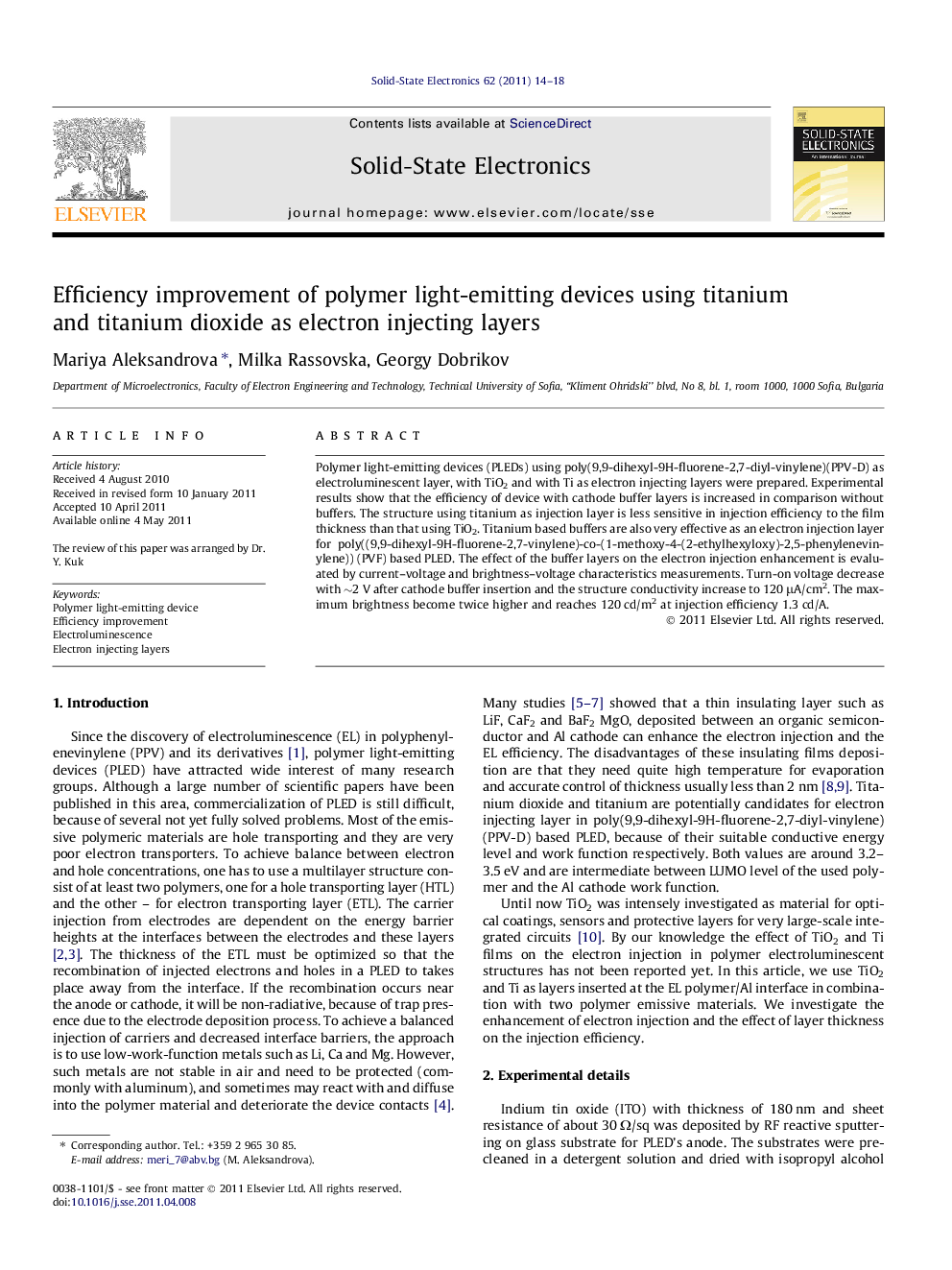| Article ID | Journal | Published Year | Pages | File Type |
|---|---|---|---|---|
| 753055 | Solid-State Electronics | 2011 | 5 Pages |
Polymer light-emitting devices (PLEDs) using poly(9,9-dihexyl-9H-fluorene-2,7-diyl-vinylene)(PPV-D) as electroluminescent layer, with TiO2 and with Ti as electron injecting layers were prepared. Experimental results show that the efficiency of device with cathode buffer layers is increased in comparison without buffers. The structure using titanium as injection layer is less sensitive in injection efficiency to the film thickness than that using TiO2. Titanium based buffers are also very effective as an electron injection layer for poly((9,9-dihexyl-9H-fluorene-2,7-vinylene)-co-(1-methoxy-4-(2-ethylhexyloxy)-2,5-phenylenevinylene)) (PVF) based PLED. The effect of the buffer layers on the electron injection enhancement is evaluated by current–voltage and brightness–voltage characteristics measurements. Turn-on voltage decrease with ∼2 V after cathode buffer insertion and the structure conductivity increase to 120 μA/cm2. The maximum brightness become twice higher and reaches 120 cd/m2 at injection efficiency 1.3 cd/A.
► In this study we examined titanium and titanium dioxide as electron injecting layers in polymer light-emitting devices. ► We established efficiency improvement in comparison with the device without electron injecting layer. ► We concluded that the performance of the device with a Ti/Al cathode is less sensitive to the injection layer thickness. ► We found that these bilayer cathodes are very effective to be used together with different electroluminescent polymers. ► We ascribed the good performance to the suitable energy level alignment and low contact resistance.
